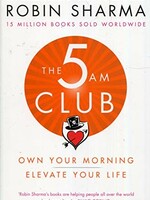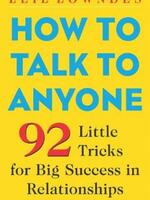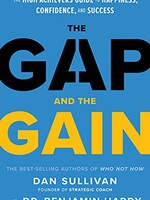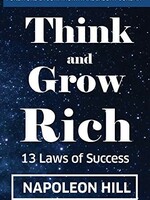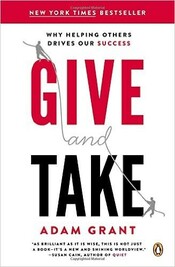
Give and Take - Book Summary
A Revolutionary Approach to Success
Release Date: April 3, 2024
Book Author: Adam Grant
Categories: Psychology, Career & Success
Release Date: April 3, 2024
Book Author: Adam Grant
Categories: Psychology, Career & Success
In this episode of 20 Minute Books, we dive into "Give and Take" by Adam Grant, a revolutionary book that topples traditional perceptions of success. Unlike the conventional wisdom that pits individuals against each other in a race to the top, "Give and Take" illuminates the power of generosity and collaboration. Grant's compelling narrative, bolstered by meticulous research, reveals that success does not solely derive from cutthroat competition but can also grow from nurturing and giving to those around us.
Adam Grant, a distinguished organizational psychologist and a professor at Wharton Business School, brings his extensive experience and scholarly work to the forefront in this book. With over 60 journal publications to his name and engagements with leading organizations like Google, Facebook, and the United Nations, Grant's insights are not just theoretical musings but practical strategies proven in various high-stakes environments.
"Give and Take" is crafted for a wide audience. It is an essential read for anyone keen on redefining success in terms of giving rather than taking. This book is especially meaningful for those looking to exert influence in a positive, non-domineering way, as well as individuals navigating the challenges of burnout from over-giving. Whether you are a leader aiming to inspire your team, an entrepreneur seeking lasting success, or simply someone who wishes to cultivate a more giving approach to personal and professional relationships, "Give and Take" offers a refreshing perspective on how altruism can lead to unparalleled achievement and fulfillment.
The self-centered world of takers: A dance of dominance
In the vast spectrum of human behavior, certain individuals stand out for their unabashed self-interest — they are the takers. These are the folks who navigate through life with a narrowed lens, prioritizing personal gains over collective well-being. Their mantra? "What's in it for me?" This outlook isn't just a personal philosophy; it shapes their interactions, turning every exchange into a strategic play for more money, recognition, and power.
At the heart of a taker's strategy is self-promotion. They're the masters of the "I" and "mine" vocabulary, often downplaying the collective "we" and "ours". Their conversations are not dialogues but monologues, laced with forceful persuasion and generously sprinkled with flattery — especially towards those in positions of power. The logic is simple: charm the influential, and climb the ladder faster.
But what fuels this relentless pursuit of self-interest? Takers see the world as inherently competitive, a zero-sum game where your loss is my gain. This worldview justifies their actions, enabling them to rationalize self-serving behaviors under the guise of playing the game by its brutal rules.
Consider the case of Kenneth Lay, the infamous CEO of Enron, whose actions epitomize the extreme consequences of a taker's mindset. Lay's choices — from extracting massive loans for personal gain to offloading $70 million in stocks before Enron's collapse — not only led to his downfall but also left thousands jobless.
Yet, it would be unjust to paint all takers with the same brush of villainy. Take Michael Jordan, a basketball legend whose journey from player to team owner saw a shift in principles. Once an advocate for players' rights to a fair share of revenue, Jordan's stance flipped upon assuming ownership. "To be successful, you have to be selfish," he claimed, highlighting a less malignant but equally self-centered philosophy.
Whether driven by outright greed or a nuanced belief in self-preservation, takers share a common belief in the scarcity of resources. They navigate life convinced that to secure the largest slice of the pie, one must outmaneuver others, prioritizing personal benefit above all else. This worldview colors their actions, making them relentless in their pursuit of personal gain, often at the expense of the collective good.
A heart for giving: The unselfish quest of the givers
Imagine a world where actions aren't transactional but transformational, where the measure of success isn't what you gain but what you give. This is the world of the givers, individuals whose greatest joy comes from enhancing the lives of others without a ledger of debts and credits in mind.
At the core of a giver's ethos is an altruistic drive that powers every interaction—be it offering career-changing advice, lending a helping hand in times of need, or sharing valuable insights. For givers, the equation is simple: the act of giving surpasses the expectation of receiving. Their generosity isn't a strategy but a sincere desire to contribute to the greater good, making the collective success their ultimate reward.
One remarkable embodiment of this spirit is George Meyer, an Emmy Award-winning creative force behind "The Simpsons". Meyer's behind-the-scenes generosity played a pivotal role in crafting the show's legacy, as he selflessly shared ideas and celebrated the implementation of those ideas, regardless of personal acknowledgment. With over 300 episodes influenced yet credited for only a dozen, Meyer's satisfaction wasn't tied to recognition but to the show's collective success. Even his accidental contribution to the English lexicon — coining the word "meh" — serves as a testament to his unassuming nature, prioritizing the series’ impact over individual accolades.
Givers, by their very nature, foster environments of abundance, believing that success isn't a zero-sum game but a shared endeavor. They illustrate that the true measure of achievement lies not in the accumulation of personal gains but in the upliftment of others. In their offering, givers find a profound sense of fulfillment, underscoring the belief that generosity is a catalyst not just for personal happiness but for communal prosperity.
In essence, givers navigate life with an open heart, championing the cause of collective well-being over personal advantage. Theirs is a path less trodden, where the currency isn't favors owed but kindness shared, proving that in giving, we find the ultimate expression of humanity and the deepest connection to one another.
The balanced exchange: Understanding the world of matchers
In the complex tapestry of human interactions, nestled between the selfless altruism of the givers and the self-serving motives of the takers, lie the matchers. Their philosophy is straightforward and resonates with a sense of fairness: "You scratch my back, and I'll scratch yours." This reciprocal approach governs their actions, aiming to keep the scales of give and take in harmonious balance.
Matchers are the proponents of equitable exchanges. They are the parents negotiating chores with their children or the friend reminding you of the time they covered for you, now asking for a ride to the airport in return. Unlike takers, who seek to gain as much as possible, or givers, who give without expectations, matchers operate on a principle of fairness, ensuring that every exchange is a two-way street.
The essence of matching is built on the foundation of reciprocity. If a matcher extends a helping hand, they do so with the anticipation of a future return. This expectation of reciprocity isn't seen as selfish; rather, it's viewed as a fair trade, a way to maintain equilibrium in relationships. Conversely, when a favor is received, a matcher feels a compelling urge to return it, keeping the balance intact. This drive stems from a deep-seated belief in fair play, where every action has an equal and opposite reaction.
Interestingly, matching is not a rare phenomenon but a prevalent mode of interaction, striking a chord with the majority. Many of us naturally gravitate towards this balanced approach, especially in the professional sphere, where skill swaps and knowledge sharing are commonplace. It’s seen as a logical strategy for navigating social interdependencies, ensuring that one's contributions are met with commensurate rewards.
Online platforms like Craigslist exemplify the matcher's ideal environment, where goods, services, and favors are exchanged in a spirit of equity. Each transaction is a microcosm of the matchers' world, where fairness isn't just a principle but a practiced norm.
In essence, matchers walk a middle path between the unconditional generosity of givers and the strategic self-interest of takers. They champion a world where mutual benefit is the gold standard, and fairness is the guiding light, striking a delicate balance that enriches social interactions and fosters a sense of communal justice.
The dynamic dance of giving and taking: Shaped by those around us
Every day, we step into the social dance floor where the rhythm of our interactions is often dictated by the crowd around us. While we might identify as givers, takers, or matchers, our behavior tends to shift and mold based on the company we keep and the situations we find ourselves in.
This adaptability reflects our innate desire to blend into our social environments, adhering to the unwritten rules and expectations of the groups we are part of. For instance, even the most self-serving takers can transform into generous givers under the watchful eyes of their peers, motivated by the desire to maintain a positive social image, rather than by genuine altruism. Conversely, the most selfless givers may rein in their generous impulses in professional settings, wary of being perceived as exploitable or weak.
An illustrative case of social influence shaping behavior can be seen in the online community Freecycle.org. This platform, dedicated to the free exchange of goods, inherently fosters a giving ethos. Even those who primarily take, upon joining this community, find themselves swept up in the prevailing current of generosity, contributing more freely than they might in other contexts. The community’s culture nudges its members towards giving, demonstrating the powerful influence of collective norms on individual actions.
Moreover, our propensity to give is significantly amplified when we recognize a bit of ourselves in others. The phenomenon of "mirroring" — where we see our own reflections in the people around us — has a profound impact on our willingness to extend a hand. This was strikingly illustrated in a study involving soccer fans: those fans were dramatically more inclined to help a fellow supporter in distress than a stranger with no apparent ties to their group. Similarity breeds solidarity, and we're naturally inclined to support those who echo aspects of our identity.
Thus, our social behaviors are not static but fluid, varying with the landscapes of our interactions. The people we surround ourselves with, the communities we engage in, and even the subtle cues signaling shared identity all play pivotal roles in determining whether we give, take, or match. In navigating the complex web of human relationships, we unconsciously tune our actions to resonate with those around us, revealing the profound impact of social context on our behavioral choices.
The downfall of the relentless taker: A lesson in humility
The age-old adage suggests that to ascend the ladder of success, one must aggressively seize opportunities. Yet, history is replete with cautionary tales of those who embraced this mantra too fervently, only to face a precipitous fall. The narrative of the persistent taker is a stark reminder that excessive taking not only erodes respect but also tarnishes reputations, leaving a trail of missed opportunities and severed connections.
Consider the illustrious yet cautionary story of Jonas Salk, the renowned scientist behind the polio vaccine. In a defining moment that could have celebrated collective triumph, Salk's omission to acknowledge the collaborative effort during a press conference not only disheartened his team but also marked the beginning of his professional isolation. Despite his groundbreaking contribution to medical science, Salk's reluctance to share credit hindered his recognition by the scientific community, excluding him from the prestigious National Academy of Sciences and the Nobel Prize laurels. This tale underscores a poignant truth: recognition is a currency that, when hoarded, depreciates in value.
Similarly, the celebrated architect Frank Lloyd Wright's narrative paints a portrait of a visionary compromised by his own egotism. Wright's treatment of his apprentices—demanding contributions without compensation and asserting ownership over their creativity—underscores a profound disregard for the principles of mutual respect and fair exchange. His son’s experience, billed for a lifetime of familial support upon seeking fair wages, epitomizes the personal cost of Wright’s ethos. Wright's professional relationships suffered, manifesting in clients’ aversion to his practices and preference for his apprentices. These episodes illustrate that the architect's legacy was, in part, architectured by his own disregard for the value of collaboration.
These stories serve as iIlluminate the "taker tax"—a societal levy imposed through the collective censure of overtly self-serving behaviors. This tax, often manifested as a damaged reputation, acts as a deterrent, punishing those whose actions are deemed detrimental to the fabric of mutual respect and cooperation. It is a potent reminder that success obtained at the expense of others' acknowledgment is a pyrrhic victory, ultimately compromising one's standing and legacy.
Thus, the trajectory of persistent takers like Salk and Wright serve not only as narratives of individual downfall but as a broader lesson on the imperative of humility, respect, and the intrinsic value of acknowledging the contributions of others. In the grand calculus of success, it becomes evident that genuine achievement is not merely measured by the heights one reaches but by the respect and integrity maintained in the ascent.
Champions of the greater good: How givers reach the pinnacle of success
Contrary to popular belief, the path to the pinnacle of professional success is not solely paved with self-interest and competitive strategies. On the contrary, it turns out that being a giver, someone inherently motivated by contributing to the greater good, can be a remarkably effective approach to rising to the top, even in fields notoriously known for their cutthroat nature.
Abraham Lincoln's historical narrative is a compelling illustration of this principle. Lincoln, before becoming one of the most revered figures in American history, made a choice that seemed counterintuitive to his political aspirations. In an act of selfless strategic withdrawal, he stepped back from a senate race to support Lyman Trumbull, a competitor with aligned visions on the crucial issue of abolishing slavery. Lincoln prioritized the collective cause over personal gain, a decision that didn't just align with moral integrity but also paved the way for his future political successes, with Trumbull later becoming a key supporter in his senate and presidential campaigns.
Fast forward to contemporary times, Jason Geller's narrative at Deloitte Consulting echoes the timeless value of giving. Geller, by developing and sharing an innovative information management system with his colleagues, chose to elevate the company's collective capability over personal accolades. This act of sharing crucial knowledge, rather than gatekeeping it for individual advantage, not only advanced the firm's competitive edge but also catalyzed Geller's ascent to one of the youngest partners at Deloitte.
These stories underscore a profound truth; focusing on the greater good generates a ripple effect that benefits the individual as much as it does the collective. The ethos of giving, by fostering an environment of trust, collaboration, and mutual respect, often leads to unforeseen opportunities for personal and professional growth. In the realm of leadership and influence, the givers, with their commitment to the wider community's wellbeing, frequently find themselves in positions of authority and respect, leaving a lasting impact on society.
In essence, the journey to the zenith of success for givers is marked not by a relentless pursuit of self-interest but by a dedication to the communal good. This paradigm challenges conventional wisdom, illustrating that true power and influence stem from an unwavering commitment to elevating others alongside oneself.
The generous connector: Leveraging networks for mutual growth
Imagine a world where reaching out for a favor doesn’t come with a side of hesitation or guilt, even if the last interaction was years ago. This is the realm of the givers, those rare individuals who maintain their relationships not by keeping score but by fostering genuine connections. Their secret? A deep-seated belief in the power of giving without the immediate expectation of return, creating a network that's both wide and deeply interconnected.
Enter Adam Rifkin, a paradigm of the successful giver, who not only earned the title of Fortune Magazine’s 2011 best networker but also co-founded 106 Miles, a vibrant community where entrepreneurs infuse life into their visions through collective knowledge sharing. This initiative isn’t just about networking in the traditional sense; it’s about creating a space where helping is the currency, and connections are the byproduct.
Rifkin’s story exemplifies how a giver's network operates like a well-oiled machine, driven by altruism. When the time came for him to seek advice for starting a new venture, he reached out to Graham Spencer, co-founder of Excite, after a hiatus of five years. The response? Immediate and helpful. This is the hallmark of a giver's network – the bonds formed are so strong and based on such a foundation of generosity that rekindling them doesn’t require re-establishing trust. It’s already there, solidified by past acts of selflessness.
This phenomenon hinges on the principle that acts of genuine kindness and support breed a reputation that precedes one. In a giver’s network, the knowledge that an individual is acting not out of self-interest but from a place of wanting to uplift others creates an environment ripe for mutual flourishing. It’s an ecosystem where resources and insights circulate freely, driven by the collective interest rather than individual gain.
Such networks are a testament to the far-reaching impact of generosity. They thrive on the principle that helping others inevitably boomerangs back, often in forms more significant than can be anticipated. For givers like Rifkin, their networks are not just a list of contacts but a community built on the ethos of shared growth and reciprocity — a shining example of how giving can indeed elevate everyone involved.
In essence, the successful navigators of this interconnected web understand that cultivating and nurturing a network centered on benevolence is not just beneficial but pivotal. It’s a strategy that underscores the profound truth that in giving, we receive, solidifying not just our relationships but also our paths to personal and communal success.
Unleashing hidden gems: The giver’s knack for fostering talent
Imagine a world where every handshake, every introduction, is seen not just as a meeting between two individuals, but as the uncovering of untapped potential. This is the realm in which givers operate, making them unparalleled talent scouts and nurturers. For givers, the question isn't if someone holds potential; it's about how they can help reveal and foster it. This belief system doesn't just change lives; it creates a cascading effect of success that often reflects positively back onto the givers themselves.
Take the story of Stu Inman, a legendary figure in the world of NBA basketball management. Inman's approach wasn't just about assembling a team of already recognized stars; it was about seeing beyond the surface, identifying untapped talent, and dedicating himself to nurturing it. Perhaps one of his most significant achievements was recognizing the potential in Clyde Drexler, a player who wasn't on every scout's radar but who went on to achieve tremendous success in basketball. Inman's legacy is not just in the victories or the accolades but in the acknowledgment of his deep commitment to fostering talent.
In the academic realm, C. J. Skender stands out as a beacon of giving. An award-winning accounting professor, Skender has become renowned not just for his skills in teaching but for his unwavering belief in his students. By personalizing his approach, sending letters of encouragement to CPA exam takers, Skender did more than teach; he believed. This approach has led to an impressive roster of students achieving high honors, including medals for their CPA performance. Among his mentees is Reggie Love, who climbed the ranks to become the personal assistant to former President Barack Obama, a testament to the far-reaching impact of Skender’s mentorship.
These stories exemplify the profound role givers play in recognizing and nurturing potential. By looking past the immediate evidence of talent and investing in the inherent potential of individuals, givers create avenues for success that benefit not only the protégées but also reflect back on the mentors themselves. It's a cycle of goodwill that reinforces the idea that within everyone lies greatness, waiting to be unlocked.
The givers’ unique ability to see beyond the present, to envision what could be rather than what is, makes them extraordinary mentors and catalysts for change. Theirs is a testament to the power of belief in others, serving as a reminder that sometimes, all it takes to unveil talent is a vote of confidence and the willingness to invest time and hope in someone’s future.
In essence, the givers’ knack for identifying and cultivating potential isn’t just about creating success stories; it’s about building a legacy of empowerment and achievement that transcends individual accomplishments, showcasing the timeless value of investing in humanity.
The subtle strength of powerless communication
When imagining the archetype of successful communication, many of us might conjure images of assertive, commanding speakers who captivate their audiences with sheer force of conviction. However, a shift in perspective reveals an unexpected insight: sometimes, the quieter, more introspective approach of powerless communication can wield a surprising amount of influence.
This method of communication is characterized by its emphasis on the listener. It's about asking questions, seeking advice, and expressing genuine interest in the perspectives of others. Far from being a sign of weakness, this approach is a strategic tool that fosters trust and openness, making it particularly potent for those who naturally operate from a place of giving. Instead of meeting others with resistance, powerless communication draws them in, paving the way for more impactful exchanges.
A compelling case study supporting the effectiveness of this approach comes from the optometry industry. Among these professionals, those identified as givers were not only well-regarded by their colleagues but also excelled in sales. One standout, Kildare Escoto, exemplifies this approach. Escoto sets himself apart by engaging customers with genuine curiosity about their needs and lifestyle, steering clear of the hard sell. This method not only builds trust but also enables him to recommend solutions that truly resonate with customers, leading to his dual recognition as LensCrafters’ top giver and salesperson.
Another vivid illustration of powerless communication at work involves "Annie", a scientist navigating a career challenge. Faced with the potential discontinuation of her MBA studies due to a plant closure and subsequent job transfer, Annie opted for a consultative, rather than confrontational, approach with her HR manager. By asking, "What would you do?", she opened a dialogue based on empathy and mutual respect. The outcome was remarkable: Annie was granted access to company resources, in this case, the private jet, allowing her to maintain her job and continue her studies.
These examples underscore the underestimated power of communicating from a place of humility and genuine interest. Rather than diminishing one’s authority, this approach can enhance it, fostering a climate of trust and cooperation that enables both individual and collective successes.
Powerless communication, thus, emerges not as a weakness but as a strategic advantage, particularly for givers. It’s a testament to the fact that influence need not always be exerted through dominance but can be gracefully achieved through engagement, empathy, and understanding. This revelatory approach shifts the paradigm, proving that in the realm of communication, sometimes less is indeed more.
Navigating the path to sustainable giving
Givers, by their very nature, pour into the lives of others, often at the expense of their own well-being. While their generosity is the bedrock of many successes, it also exposes them to risks of burnout and exploitation by those who take without reciprocating. The key to harnessing the power of giving, then, is not to retreat from one's generous instincts but to practice it in a way that is both fulfilling and sustainable.
Recent insights suggest an intriguing paradox: the antidote to giver’s fatigue is not to cut back on helping others but to engage in it more deeply in a way that the giver can see the tangible impact of their actions. Take the story of Conrey Callahan, a schoolteacher teetering on the edge of burnout. For Callahan, the solution wasn’t to pull back but to lean in by initiating a mentoring program. While this endeavor added more to her plate, it also brought her closer to the positive outcomes of her generosity, recharging her passion for teaching and mentoring. This experience underscores the importance of witnessing the fruits of one’s labor, which, rather than overwhelming the giver, renews their sense of purpose and motivation.
Yet, the journey of giving is not without its potential pitfalls. Givers often find themselves at risk of being taken advantage of by takers, relegated to the role of a “doormat” in extreme cases. The strategy to counterbalance this lies not in retracting one’s generous nature but in adopting what is known as generous tit for tat. This approach involves matching the behavior of takers while managing to forgive occasionally and extend kindness, maintaining a balance between generosity and self-protection. This strategy empowers givers by allowing them to navigate their interactions with takers more strategically, fostering an environment where positive behaviors are encouraged but exploitation is curbed.
The essence of sustainable giving, therefore, revolves around two critical dimensions: engaging in giving in a manner that allows one to witness and celebrate the impact of their contributions, and mastering the art of strategic generosity to protect against exploitation. By doing so, givers can continue to enrich the lives of others without depleting their own reserves, ensuring that their giving remains a source of joy and rejuvenation.
Givers, armed with these insights, can chart a course toward enduring success, proving that generous spirits can thrive without burning out or falling prey to the manipulations of takers. The journey of giving, thus navigated with wisdom and balance, becomes not just a path of external contribution but also one of internal fulfillment and resilience.
Unlocking the Power of Giving: A New Paradigm for Success
At the heart of true success lies a principle often overlooked: the transformative power of giving. Contrary to traditional beliefs that position competitive taking as the key to achievement, a compelling body of research and a plethora of historical examples suggest otherwise. The essence of enduring success, both for individuals and groups, comes not from what we take but from what we give.
This exploration of generosity versus self-interest delineates three distinct interaction styles that define our engagements with the world:
- Takers prioritize self-advantage, seeking to extract maximum personal benefit from their interactions.
- Givers, in contrast, operate from a place of altruism, aiming to contribute to the welfare of others even at their own expense.
- Matchers navigate the middle ground, advocating for a balanced exchange of favors and benefits.
Further exploration reveals that the context of our relationships greatly influences our behavior. Our interaction style can shift depending on the prevailing norms and expectations of our social circles.
While takers might enjoy fleeting victories, their self-serving tactics ultimately lead to diminished respect and tarnished reputations, obstructing long-term success. On the other hand, givers, through their focus on the greater good and their adeptness at cultivating intricate networks of support, often rise to the top. Their ability to recognize and nurture potential in others, coupled with their use of powerless communication, grants them a unique advantage in achieving influential positions.
However, the path of the giver is not without its challenges. Avoiding burnout and guarding against exploitation by takers are crucial for sustaining the giving approach. Strategies such as seeking tangible evidence of the impact of one's generosity and adopting a generous tit-for-tat approach to interactions can help maintain the delicate balance between giving and self-preservation.
In essence, this narrative invites us to reconsider our approach to success. It champions a shift from a mindset of scarcity and competition to one of abundance and collaboration. It argues convincingly that by embracing giving, not as a strategy for personal gain but as a genuine endeavor to enrich the lives of others, we can unlock a potent force for positive change in our world and in ourselves. True success, it turns out, is not just about the heights we reach but about the hands we extend on our way up.
